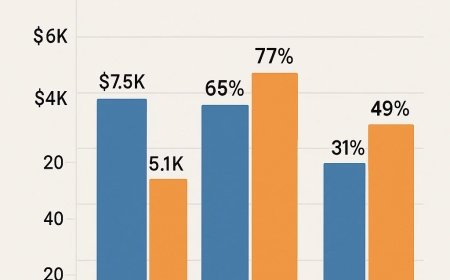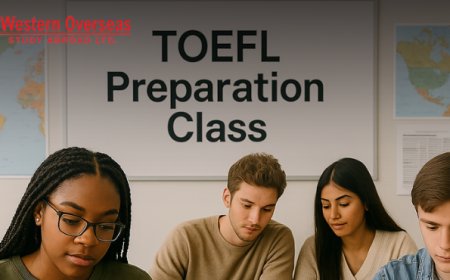The Influence of Federalist Papers in John Enos Interpretation of Gun Rights
Explore how the Federalist Papers shaped John Enos' interpretation of gun rights in his book The Right to Keep and Bear Arms, reflecting founding ideals.

Right to Keep and Bear Arms Book Overview
John W. Enoss interpretation of the Second Amendment draws heavily from Americas founding principles, and nowhere is this influence more apparent than in his consideration of the Federalist Papers. In his comprehensive text, The Right to Keep and Bear Arms, Enos builds a case for individual firearm rights rooted in the intellectual framework established by the Founding Fathers. His arguments explore not just the legal but also the philosophical grounding of the Second Amendment, and he consistently references the writings of prominent Federalists like James Madison and Alexander Hamilton to underscore the constitutional intentions behind the right to bear arms.
Re centering the Second Amendment Debate
Enos argues that modern discussions surrounding the Second Amendment often ignore the ideological foundation upon which it was constructed. By bringing the Federalist Papers back into the conversation, he re-centers the discourse on original intent. According to Enos, these writings offer invaluable insight into the minds of those who drafted and ratified the Constitution. The idea of an armed citizenry, as envisioned by the Federalists, was not merely about personal defense but was a safeguard against tyranny, a check on standing armies, and a reinforcement of civic responsibility.
Madison and Hamilton on the Militia Principle
In The Right to Keep and Bear Arms, Enos devotes considerable attention to Federalist No. 46 by James Madison. Here, Madison famously emphasizes the balance of power between the federal government and the states, suggesting that state governments, supported by a well-armed citizenry, could resist federal overreach. Enos interprets this as a clear endorsement of decentralized power supported by the militia principle. However, he expands the definition of "militia" beyond a formal state-controlled body to include all able-bodied citizens capable of bearing arms. This broader interpretation, according to Enos, aligns more closely with the founders vision than many restrictive modern interpretations.
Another important document referenced by Enos is Federalist No. 29 by Alexander Hamilton. Hamilton discusses the impracticality of a full-time, government-controlled militia and supports the idea of a citizen-based defensive force. Enos takes this argument further, asserting that Hamilton's support for civilian preparedness reflects an understanding that firearm ownership was not a privilege granted by the state but a right already possessed by the people. He contends that these foundational views collectively establish that the Second Amendment was never intended to limit gun ownership to formal military service or government sanction.
Broader Constitutional Framework
What sets Enos apart from many modern legal scholars is his insistence on contextualizing the Second Amendment not as an isolated clause but as a piece of a broader philosophical framework. He notes that the Federalists wrote with a keen awareness of the dangers posed by centralized power. Their arguments were shaped by historical experiences with monarchy and tyranny. The right to bear arms, therefore, was embedded in a political culture that valued liberty, vigilance, and civilian participation in national defense.
From Founding Ideals to Present-Day Rights
Enos doesnt merely reference the Federalist Papers for rhetorical support; he dissects them line by line to draw a direct line from the founders ideology to contemporary gun rights debates. For example, in his analysis of Madisons arguments, Enos emphasizes the presumption of trust placed in citizens. Madison did not fear a populace armed with firearms; instead, he saw them as integral to the preservation of liberty. Enos critiques modern interpretations that associate firearm ownership solely with crime or danger, arguing that such views fundamentally misunderstand the cultural and constitutional context in which the Second Amendment was born.
Bipartisan Roots of Gun Rights
Further reinforcing his perspective, Enos explores the political tension between Federalists and Anti-Federalists. While Anti-Federalists were often more suspicious of centralized power, both factions agreed on the necessity of a citizenry capable of self-defense. Enos uses this bipartisan consensus to argue that the right to keep and bear arms was not a partisan or temporary solution but a deeply held belief shared across the ideological spectrum of the 18th century. This consensus, he suggests, is often ignored in current legal discourse, which tends to fragment and reinterpret the amendment through the lens of contemporary politics.
Relevance in the Modern Legal Landscape
In connecting the philosophical ideals of the Federalists with current-day challenges, Enos offers a historically grounded but forward-looking view. He acknowledges that modern society faces problems the founders could not have anticipated. Yet, he insists that the principle of citizen empowerment through arms remains relevant. According to Enos, understanding the Federalists' vision does not mean resisting reform but ensuring that reforms respect the constitutional foundations of the republic.
Original Intent and Judicial Interpretation
Importantly, Enoss work also critiques judicial interpretations that stray too far from historical precedent. He argues that court rulings often reflect changing political climates rather than enduring constitutional truths. The Federalist Papers, in his view, should act as a stabilizing force in legal interpretation, anchoring decisions in the original understanding of the amendment. This is a recurring theme throughout The Right to Keep and Bear Arms Book Overview , where Enos makes the case that the original writings provide more than historical backgroundthey offer actionable guidance for lawmakers, judges, and citizens alike.
Call for Civic Responsibility
By embedding his interpretation of gun rights in the thought and writings of Americas founders, Enos attempts to elevate the gun rights debate beyond partisan gridlock. He urges Americans to return to the source materialespecially the Federalist Papersto appreciate the philosophical depth of the Second Amendment. His analysis promotes not only individual rights but also the responsibilities that come with them. Armed citizens, he argues, are not just defenders of homes or property but stewards of democratic liberty.
Conclusion
A crucial passage in captures the essence of Enoss argument: the Second Amendment is not merely a legal provision but a reflection of Americas commitment to self-governance. This central idea runs through every chapter of his book, where historical texts like the Federalist Papers are used not just for validation but for illumination. The founding generation, as Enos sees it, trusted the people more than the state. That trust is the bedrock of the Second Amendment, and it must not be eroded by contemporary fear or political expedience.
In conclusion, John Enoss reliance on the Federalist Papers for interpreting the Second Amendment offers a compelling return to first principles. His approach blends historical scholarship with modern legal critique to present a robust defense of the right to bear arms. By anchoring his analysis in foundational texts, Enos reaffirms the enduring relevance of the Second Amendment as envisioned by those who crafted it. His book challenges readers to think critically, act responsibly, and engage fully with the civic and philosophical traditions that shaped the United States.








&srotate=0)

























